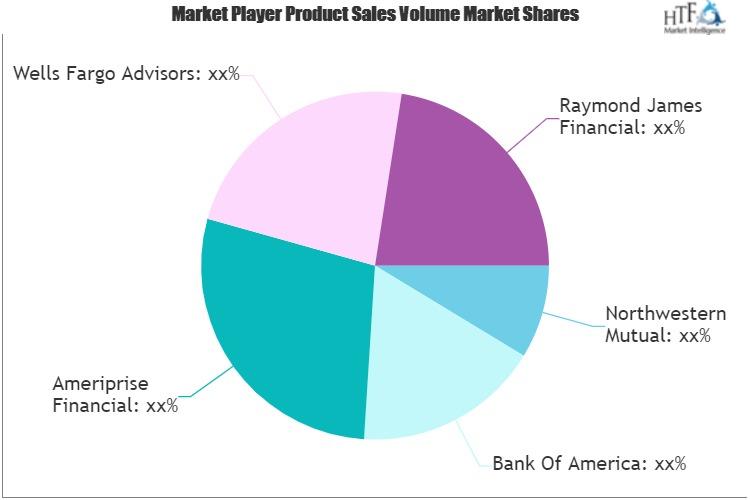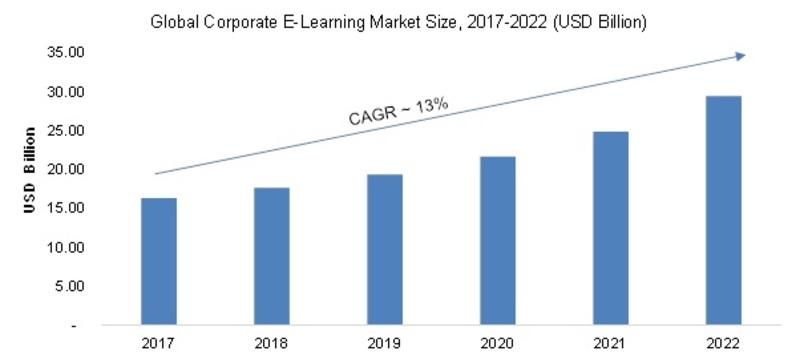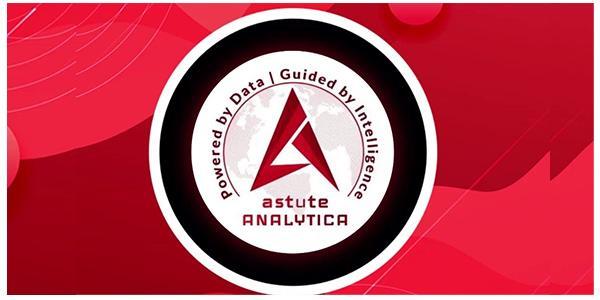Press release
Global Carbon Credit Market
The global carbon credit market was valued at US$ 1.0 billion in 2023 and is projected to reach US$ 84.4 billion by 2050, expanding at an impressive CAGR of 18% during the forecast period 2024-2050.
As governments and corporations seek to reduce greenhouse gas (GHG) emissions, carbon credits have become a key instrument in global climate policy. Carbon credits allow businesses to comply with cap-and-trade systems by either selling surplus allowances or purchasing credits to offset excess emissions. Each credit represents one metric ton of CO2 not released into the atmosphere. While the cost of carbon credits varies due to market dynamics, regulatory frameworks, and project costs, businesses must actively manage their emissions or face increased costs on exchanges like Xpansiv CBL (New York) and AirCarbon Exchange (Singapore).
The Request of this sample Report Here: - https://www.astuteanalytica.com/request-sample/carbon-credit-market
There are approximately 30 carbon trading systems operating across 38 countries, covering over 75% of the global carbon credit volume. The European Union Emissions Trading System (EU ETS) dominates this market, accounting for nearly 90% of global carbon credit transactions in 2021. Additionally, 73 carbon pricing instruments were in effect worldwide as of April 2023, covering 23% of global GHG emissions.
Voluntary markets are also seeing substantial growth, particularly in nature-based solutions such as reforestation, wetland restoration, and soil carbon sequestration. These projects contributed 60% of the voluntary carbon market's total value in 2022, with projections estimating their valuation at US$ 50 billion by 2050.
Market Dynamics
Regulatory Pressure: A Key Driver for Carbon Market Growth
The expansion of the carbon credit market is primarily driven by regulatory pressure and government-mandated carbon pricing mechanisms. To incentivize emissions reductions, an increasing number of nations are implementing carbon trading systems, such as cap-and-trade programs and carbon tax initiatives.
Key regulatory developments include:
73 active carbon pricing mechanisms in 2023, covering 23.04% of global GHG emissions.
The EU ETS remains the world's largest carbon market, representing 90% of global carbon trading volume in 2023.
China's national emissions trading system (ETS), launched in 2021, is projected to become the largest carbon market, covering approximately 4 billion metric tons of CO2 annually.
46 national and 36 subnational jurisdictions have implemented or are developing carbon pricing policies, accounting for 60% of global GDP.
Global carbon pricing initiatives generated US$ 84 billion in revenue in 2023, a 60% year-over-year increase, which is being reinvested in climate mitigation and adaptation projects.
This growing regulatory framework is accelerating the adoption of carbon credits, making compliance a strategic priority for corporations. As more governments tighten emissions limits and raise carbon prices, the market is poised for long-term growth.
Nature-Based Solutions: A Rising Trend in Carbon Credit Markets
Nature-based solutions (NbS) are emerging as a dominant segment in voluntary carbon markets, leveraging reforestation, wetland restoration, and sustainable land management to sequester carbon and enhance biodiversity.
Key trends in NbS include:
Nature-based solutions accounted for 60% of the voluntary carbon market value in 2022.
47% of all voluntary credits issued in 2022 came from forestry and land-use projects.
REDD+ (Reducing Emissions from Deforestation and Forest Degradation) has over 350 projects in 79 countries, with a potential to offset 6 billion metric tons of CO2 by 2030.
Cost-effectiveness: Nature-based solutions could provide up to 37% of required emissions reductions under the Paris Agreement by 2030, with an estimated mitigation cost of less than $10 per metric ton of CO2.
Co-benefits: These projects enhance biodiversity, support local economies, and promote climate resilience. The Kasigau Corridor REDD+ Project in Kenya, for example, protects over 200,000 hectares of forest while generating local jobs and supporting education and healthcare.
The continued expansion of nature-based solutions presents investment opportunities, as corporate ESG (Environmental, Social, and Governance) commitments drive demand for high-quality voluntary carbon offsets.
Scaling Up Supply: The Market's Biggest Challenge
Despite strong demand for carbon credits, the supply of high-quality credits remains constrained due to project development hurdles and transparency concerns.
Key challenges include:
Lack of upfront investment-80% of carbon offset developers cite insufficient demand visibility as a barrier to expanding supply (Source: Taskforce on Scaling Voluntary Carbon Markets).
Project development timelines-It takes 3-5 years to develop and register a carbon offset project, delaying market expansion.
Monitoring, Reporting, and Verification (MRV) Issues-Robust MRV frameworks are critical for ensuring transparency and credibility in carbon offset projects.
Integrity concerns-A 2021 study by UC Berkeley found that 85% of voluntary offsets might not represent genuine emissions reductions, due to double counting, overestimated baselines, and non-permanence risks.
Standardization efforts-Initiatives like the Voluntary Carbon Market Integrity Initiative (VCMI) and Science-Based Targets Initiative (SBTi) are working to enhance trust in carbon credits through strict methodologies and quality benchmarks.
To overcome these challenges, organizations such as the World Bank's Climate Warehouse are digitizing and standardizing carbon trading platforms, reducing transaction costs and entry barriers. If these issues are successfully addressed, carbon credit supply could scale up significantly, enabling broader market participation.
Read Detailed Index of Full Research Study at @ https://www.astuteanalytica.com/industry-report/carbon-credit-market
Top Players in Carbon Credit Market
3Degrees
Atmosfair
Climate Impact Partners
ClimeCo LLC
EKI Energy Services Ltd.
Finite Carbon
Moss.earth
NativeEnergy
NATUREOFFICE
Pachama, Inc.
South Pole Group
Tasman Environmental Markets
Terrapass
Verra Carbon
Xpansiv
Other Prominent Players
Recent Development
In April 2024, Manx Willdlife Trust launched a carbon credit project, which is expected to sequester over 3,000 tonnes of carbon in the next 50 years as well as establishing and sustainably developing native woodland, ensuring biodiversity and creating a public nature site.
Market Segmentation Overview:
By Type
Voluntary Markets
Compliance Markets
By Source
Technology Based
Biomass
Forest Based
Sewage Treatment Plants
Wastewater Treatment Plants
By Project Type
Carbon Avoidance Projects
Carbon Removal projects
Nature Based
Technology Based
By Selling Platform
Direct Contact
Climate Exchange Platforms
By Business Size
Small and Micro Enterprises
Medium and Large Businesses
By Industry
Power Generation
Biomass
Geothermal
Hydrogen
Solar
Others
Waste Treatment Plant
Sewage Treatment
Commercial Waste Treatment
Industrial Waste Treatment
Municipal Solid Waste
Others Waster Treatment
Cement
Oil & Gas
Iron & Steel
Chemical & Petrochemical
Other Industries
By Region
North America
The U.S.
Canada
Mexico
Europe
Western Europe
The UK
Germany
France
Italy
Spain
Rest of Western Europe
Eastern Europe
Poland
Russia
Rest of Eastern Europe
Asia Pacific
China
India
Japan
Australia & New Zealand
South Korea
ASEAN
Rest of Asia Pacific
Middle East & Africa (MEA)
Saudi Arabia
South Africa
UAE
Rest of MEA
South America
Argentina
Brazil
Rest of South America
Future Outlook & Investment Opportunities
The carbon credit market is set for exponential growth, driven by:
Corporate Net-Zero Commitments-Over 2,000 companies worldwide have pledged to achieve net-zero emissions, fueling demand for high-quality carbon credits.
Expansion of Compliance Markets-Countries such as China, South Korea, and Canada are expanding or strengthening their ETS programs, increasing credit trading volumes.
Advances in Digital Carbon Trading-Blockchain-based solutions are improving transparency and security in carbon transactions, enhancing market efficiency.
Emergence of Carbon Removal Technologies-Direct air capture (DAC) and biochar sequestration projects could complement traditional offsets, providing permanent carbon removal solutions.
Growth in Nature-Based Solutions-With an expected US$ 50 billion valuation by 2050, NbS will play a crucial role in scaling up the voluntary carbon market.
As the global carbon credit market matures, companies, investors, and governments will increasingly rely on transparent pricing, standardization, and digital trading platforms to ensure integrity and scalability.
Conclusion
The global carbon credit market is rapidly expanding, driven by regulatory mandates, corporate sustainability commitments, and innovations in carbon offset projects. While regulatory compliance programs dominate market volume, voluntary carbon markets are evolving, with nature-based solutions and carbon removal technologies gaining momentum.
Despite challenges in scaling supply and ensuring credit integrity, technological advancements, new policy frameworks, and increased investment in carbon offset projects will support the market's long-term expansion. By 2050, carbon credits will be a fundamental tool in achieving global net-zero goals, reinforcing their importance in the global transition to a low-carbon economy.
Get a Sample PDF of the Report:-https://www.astuteanalytica.com/request-sample/carbon-credit-market
About Astute Analytica:
Astute Analytica is a global analytics and advisory company that has built a solid reputation in a short period, thanks to the tangible outcomes we have delivered to our clients. We pride ourselves in generating unparalleled, in-depth, and uncannily accurate estimates and projections for our very demanding clients spread across different verticals. We have a long list of satisfied and repeat clients from a wide spectrum including technology, healthcare, chemicals, semiconductors, FMCG, and many more. These happy customers come to us from all across the globe.
They are able to make well-calibrated decisions and leverage highly lucrative opportunities while surmounting the fierce challenges all because we analyse for them the complex business environment, segment-wise existing and emerging possibilities, technology formations, growth estimates, and even the strategic choices available. In short, a complete package. All this is possible because we have a highly qualified, competent, and experienced team of professionals comprising business analysts, economists, consultants, and technology experts. In our list of priorities, you-our patron-come at the top. You can be sure of the best cost-effective, value-added package from us, should you decide to engage with us.
Get in touch with us
Phone number: +18884296757
Email: sales@astuteanalytica.com
Visit our website: https://www.astuteanalytica.com
As governments and corporations seek to reduce greenhouse gas (GHG) emissions, carbon credits have become a key instrument in global climate policy. Carbon credits allow businesses to comply with cap-and-trade systems by either selling surplus allowances or purchasing credits to offset excess emissions. Each credit represents one metric ton of CO2 not released into the atmosphere. While the cost of carbon credits varies due to market dynamics, regulatory frameworks, and project costs, businesses must actively manage their emissions or face increased costs on exchanges like Xpansiv CBL (New York) and AirCarbon Exchange (Singapore).
The Request of this sample Report Here: - https://www.astuteanalytica.com/request-sample/carbon-credit-market
There are approximately 30 carbon trading systems operating across 38 countries, covering over 75% of the global carbon credit volume. The European Union Emissions Trading System (EU ETS) dominates this market, accounting for nearly 90% of global carbon credit transactions in 2021. Additionally, 73 carbon pricing instruments were in effect worldwide as of April 2023, covering 23% of global GHG emissions.
Voluntary markets are also seeing substantial growth, particularly in nature-based solutions such as reforestation, wetland restoration, and soil carbon sequestration. These projects contributed 60% of the voluntary carbon market's total value in 2022, with projections estimating their valuation at US$ 50 billion by 2050.
Market Dynamics
Regulatory Pressure: A Key Driver for Carbon Market Growth
The expansion of the carbon credit market is primarily driven by regulatory pressure and government-mandated carbon pricing mechanisms. To incentivize emissions reductions, an increasing number of nations are implementing carbon trading systems, such as cap-and-trade programs and carbon tax initiatives.
Key regulatory developments include:
73 active carbon pricing mechanisms in 2023, covering 23.04% of global GHG emissions.
The EU ETS remains the world's largest carbon market, representing 90% of global carbon trading volume in 2023.
China's national emissions trading system (ETS), launched in 2021, is projected to become the largest carbon market, covering approximately 4 billion metric tons of CO2 annually.
46 national and 36 subnational jurisdictions have implemented or are developing carbon pricing policies, accounting for 60% of global GDP.
Global carbon pricing initiatives generated US$ 84 billion in revenue in 2023, a 60% year-over-year increase, which is being reinvested in climate mitigation and adaptation projects.
This growing regulatory framework is accelerating the adoption of carbon credits, making compliance a strategic priority for corporations. As more governments tighten emissions limits and raise carbon prices, the market is poised for long-term growth.
Nature-Based Solutions: A Rising Trend in Carbon Credit Markets
Nature-based solutions (NbS) are emerging as a dominant segment in voluntary carbon markets, leveraging reforestation, wetland restoration, and sustainable land management to sequester carbon and enhance biodiversity.
Key trends in NbS include:
Nature-based solutions accounted for 60% of the voluntary carbon market value in 2022.
47% of all voluntary credits issued in 2022 came from forestry and land-use projects.
REDD+ (Reducing Emissions from Deforestation and Forest Degradation) has over 350 projects in 79 countries, with a potential to offset 6 billion metric tons of CO2 by 2030.
Cost-effectiveness: Nature-based solutions could provide up to 37% of required emissions reductions under the Paris Agreement by 2030, with an estimated mitigation cost of less than $10 per metric ton of CO2.
Co-benefits: These projects enhance biodiversity, support local economies, and promote climate resilience. The Kasigau Corridor REDD+ Project in Kenya, for example, protects over 200,000 hectares of forest while generating local jobs and supporting education and healthcare.
The continued expansion of nature-based solutions presents investment opportunities, as corporate ESG (Environmental, Social, and Governance) commitments drive demand for high-quality voluntary carbon offsets.
Scaling Up Supply: The Market's Biggest Challenge
Despite strong demand for carbon credits, the supply of high-quality credits remains constrained due to project development hurdles and transparency concerns.
Key challenges include:
Lack of upfront investment-80% of carbon offset developers cite insufficient demand visibility as a barrier to expanding supply (Source: Taskforce on Scaling Voluntary Carbon Markets).
Project development timelines-It takes 3-5 years to develop and register a carbon offset project, delaying market expansion.
Monitoring, Reporting, and Verification (MRV) Issues-Robust MRV frameworks are critical for ensuring transparency and credibility in carbon offset projects.
Integrity concerns-A 2021 study by UC Berkeley found that 85% of voluntary offsets might not represent genuine emissions reductions, due to double counting, overestimated baselines, and non-permanence risks.
Standardization efforts-Initiatives like the Voluntary Carbon Market Integrity Initiative (VCMI) and Science-Based Targets Initiative (SBTi) are working to enhance trust in carbon credits through strict methodologies and quality benchmarks.
To overcome these challenges, organizations such as the World Bank's Climate Warehouse are digitizing and standardizing carbon trading platforms, reducing transaction costs and entry barriers. If these issues are successfully addressed, carbon credit supply could scale up significantly, enabling broader market participation.
Read Detailed Index of Full Research Study at @ https://www.astuteanalytica.com/industry-report/carbon-credit-market
Top Players in Carbon Credit Market
3Degrees
Atmosfair
Climate Impact Partners
ClimeCo LLC
EKI Energy Services Ltd.
Finite Carbon
Moss.earth
NativeEnergy
NATUREOFFICE
Pachama, Inc.
South Pole Group
Tasman Environmental Markets
Terrapass
Verra Carbon
Xpansiv
Other Prominent Players
Recent Development
In April 2024, Manx Willdlife Trust launched a carbon credit project, which is expected to sequester over 3,000 tonnes of carbon in the next 50 years as well as establishing and sustainably developing native woodland, ensuring biodiversity and creating a public nature site.
Market Segmentation Overview:
By Type
Voluntary Markets
Compliance Markets
By Source
Technology Based
Biomass
Forest Based
Sewage Treatment Plants
Wastewater Treatment Plants
By Project Type
Carbon Avoidance Projects
Carbon Removal projects
Nature Based
Technology Based
By Selling Platform
Direct Contact
Climate Exchange Platforms
By Business Size
Small and Micro Enterprises
Medium and Large Businesses
By Industry
Power Generation
Biomass
Geothermal
Hydrogen
Solar
Others
Waste Treatment Plant
Sewage Treatment
Commercial Waste Treatment
Industrial Waste Treatment
Municipal Solid Waste
Others Waster Treatment
Cement
Oil & Gas
Iron & Steel
Chemical & Petrochemical
Other Industries
By Region
North America
The U.S.
Canada
Mexico
Europe
Western Europe
The UK
Germany
France
Italy
Spain
Rest of Western Europe
Eastern Europe
Poland
Russia
Rest of Eastern Europe
Asia Pacific
China
India
Japan
Australia & New Zealand
South Korea
ASEAN
Rest of Asia Pacific
Middle East & Africa (MEA)
Saudi Arabia
South Africa
UAE
Rest of MEA
South America
Argentina
Brazil
Rest of South America
Future Outlook & Investment Opportunities
The carbon credit market is set for exponential growth, driven by:
Corporate Net-Zero Commitments-Over 2,000 companies worldwide have pledged to achieve net-zero emissions, fueling demand for high-quality carbon credits.
Expansion of Compliance Markets-Countries such as China, South Korea, and Canada are expanding or strengthening their ETS programs, increasing credit trading volumes.
Advances in Digital Carbon Trading-Blockchain-based solutions are improving transparency and security in carbon transactions, enhancing market efficiency.
Emergence of Carbon Removal Technologies-Direct air capture (DAC) and biochar sequestration projects could complement traditional offsets, providing permanent carbon removal solutions.
Growth in Nature-Based Solutions-With an expected US$ 50 billion valuation by 2050, NbS will play a crucial role in scaling up the voluntary carbon market.
As the global carbon credit market matures, companies, investors, and governments will increasingly rely on transparent pricing, standardization, and digital trading platforms to ensure integrity and scalability.
Conclusion
The global carbon credit market is rapidly expanding, driven by regulatory mandates, corporate sustainability commitments, and innovations in carbon offset projects. While regulatory compliance programs dominate market volume, voluntary carbon markets are evolving, with nature-based solutions and carbon removal technologies gaining momentum.
Despite challenges in scaling supply and ensuring credit integrity, technological advancements, new policy frameworks, and increased investment in carbon offset projects will support the market's long-term expansion. By 2050, carbon credits will be a fundamental tool in achieving global net-zero goals, reinforcing their importance in the global transition to a low-carbon economy.
Get a Sample PDF of the Report:-https://www.astuteanalytica.com/request-sample/carbon-credit-market
About Astute Analytica:
Astute Analytica is a global analytics and advisory company that has built a solid reputation in a short period, thanks to the tangible outcomes we have delivered to our clients. We pride ourselves in generating unparalleled, in-depth, and uncannily accurate estimates and projections for our very demanding clients spread across different verticals. We have a long list of satisfied and repeat clients from a wide spectrum including technology, healthcare, chemicals, semiconductors, FMCG, and many more. These happy customers come to us from all across the globe.
They are able to make well-calibrated decisions and leverage highly lucrative opportunities while surmounting the fierce challenges all because we analyse for them the complex business environment, segment-wise existing and emerging possibilities, technology formations, growth estimates, and even the strategic choices available. In short, a complete package. All this is possible because we have a highly qualified, competent, and experienced team of professionals comprising business analysts, economists, consultants, and technology experts. In our list of priorities, you-our patron-come at the top. You can be sure of the best cost-effective, value-added package from us, should you decide to engage with us.
Get in touch with us
Phone number: +18884296757
Email: sales@astuteanalytica.com
Visit our website: https://www.astuteanalytica.com
Permanent link to this press release:
Copy
Please set a link in the press area of your homepage
to this press release on woodPRI. woodPRI disclaims liability for any content contained in
this release.
Recommend

/newsMicroencapsulation Market Deep Analysis on Key Players - Dow Corning, Encapsys, Syngenta Crop Protection, Evonik Industries, 3M and Bayer
Market Study Report Adds Global Microencapsulation Market Size, Status and Forecast 2024 added to its database. The report provides key statistics on the current state of the industry and other analytical data to understand the market.
Extensive research is required for choosing the appropriate cor...

/newsGermany Airbag Market Size 2023: Global Share, Industry And Report Analysis By 2030 | Hyundai Mobis Co., Ltd. Key Safety Systems, Inc. Robert Bosch GmbH
Germany airbag market is expected to grow at a CAGR of around 6% during the forecast period. Germany Airbag Market research report refers to gathering and analyzing significant market data serve as best medium for various industry players to launch novel product or service. It is vital for key firms...

/newsSecurities Brokerages And Stock Exchanges Market Outlook 2021: Big Things are Happening
A new intelligence report released by HTF MI with title "Global Securities Brokerages And Stock Exchanges Market Survey & Outlook" is designed covering micro level of analysis by Insurers and key business segments, offerings and sales channels. The Global Securities Brokerages And Stock Exchange...

/newsRenewable Chemicals Market Emerging Trends and Competitive Landscape Forecast to 2028
The renewable chemicals market was valued at US$ 80,566.30 million in 2021 and is projected to reach US$ 1,76,750.76 million by 2028 it is expected to grow at a CAGR of 11.9% from 2021 to 2028. The research report focuses on the current market trends, opportunities, future potential of the market, a...

/newsHow Coronavirus is Impacting Cold Brew Coffee, Global Market Volume Analysis, Size, Share and Key Trends 2020-2026
"Market Latest Research Report 2020:
Los Angles United States, February 2020: The Cold Brew Coffee market has been garnering remarkable momentum in the recent years. The steadily escalating demand due to improving purchasing power is projected to bode well for the global market. QY Research's lates...

/newsCorporate E-Learning Market - Global Industry Size, Share, Key Players Analysis that are Infor, SkillSoft Corporation, Adrenna, CERTPOINT Systems and others with Regional Forecast to 2022
Overview:
E-Learning is used to enhance the learning procedures for newer job requirements and to make employees sound about the internal and external changes in the market and respective organizations. This method has created considerable differences in the ways of training and developing employee...
